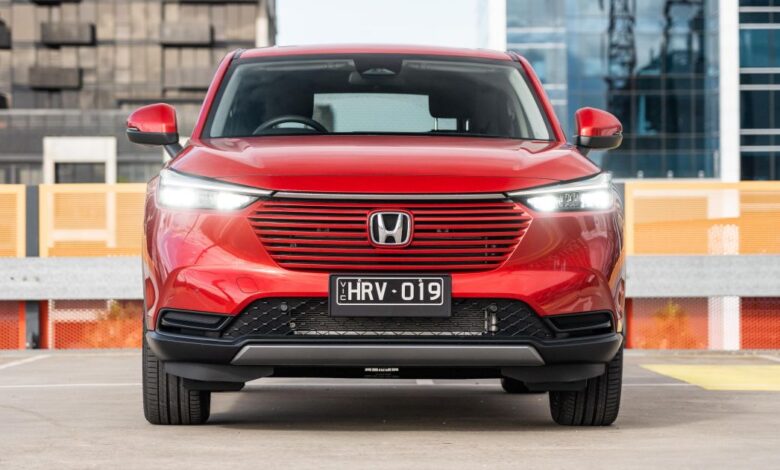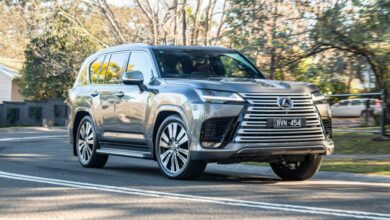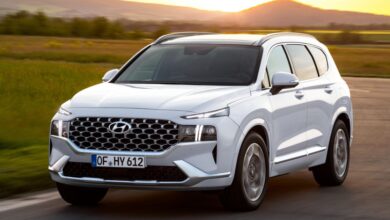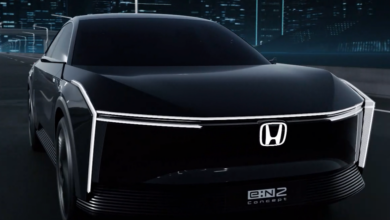2022 Honda HR-V Vi X review

The previous-generation Honda HR-V was a marvel when it came to maximising interior space within its small body, but it was never really an SUV made to turn heads.
Not so this new version, which offers cleaner and edgier styling language, and a more upscale design. In some sense, it’s more akin to the largely forgotten first HR-V iteration from the late 1990s and early 2000s…
At the same time – in line with Honda’s business strategy to sell fewer cars but at higher prices – the new model comes in just two spec grades, and costs more than its predecessor did.
Subjectively it looks the part, offering up a clean and cohesive design with elements including the striped grille, slim LED lighting, a fastback-like silhouette, and wide rear light bar.
Its combination of a shorter front overhang, lowered roof, sleeker side windows, greater ground clearance, and larger-diameter wheels give it a more powerful stance than before.
For all that, does it retain the attributes that made the previous one so enduringly popular, while improving other areas of weakness under the skin? Let’s find out.
How much does the Honda HR-V Vi X cost?
There are just two HR-Vs to choose from: the base Vi X petrol as tested here, and the e:HEV L hybrid which we reviewed here.
It’s a more expensive proposition than before, kicking off at $36,700 drive-away. The better-equipped, more powerful and more fuel-efficient hybrid is $45,000 drive-away.
Honda quotes national drive-away prices rather than recommended list prices excluding State taxes, like most brands do instead, because it uses a different business model to sell its cars, which disallows haggling at the dealer.
To put this $36,700 price into context, we got indicative drive-away quotes on some competitor models, using a Melbourne postcode.
The Mazda CX-30 starts at $33,691 drive-away while the Evolve spec was $37,125 at the time of writing. The base Kia Seltos S asks for $29,290 drive-away while the Sport+ variant cost $36,290. A Toyota C-HR GXL kicks off at $35,081 drive-away.
So the Honda is not uncompetitive, but for an entry grade it inarguably starts high. Honda counters that it’s not specified like a typical ‘base’ car, but for many people the entry price is the figure that counts.
2022 Honda HR-V pricing
- HR-V Vi X: $36,700 drive-away
- HR-V e:HEV L: $45,000 drive-away
What is the Honda HR-V Vi X like on the inside?
The interior’s aesthetics and technology are way better than the old HR-V’s, but that isn’t really saying a huge amount.
The driving position from the (manually adjustable) seats is 10mm higher than before, though the lower roof and sporty window design do seem to impact how easy it is to see out. That said, it’s not nearly as bad as a Toyota C-HR in this regard.
The seats are trimmed in really nice, soft black fabric and seemed pretty comfortable, while the wheel offers up/down and rake/reach movement. Too bad it’s made of cheap plastic rather than tactile leather.
The white-on-black instrument cluster is simple but intuitive, with a digital speed readout in the centre, analogue speedo on the right, and a digital screen with various views (tacho, trip meter, directional indicator) in the left-hand circular section controlled by the wheel buttons.
It’s all pretty well made (in Japan this time, not Thailand like the old model) and uses mostly nice soft materials on the touch points – with the notable exception of the slippery plastic base on the storage area ahead of the gear shifter, upon which things just slide about.
The 9.0-inch tablet-style touchscreen is laid out horizontally and offers a few buttons and a volume knob for shortcuts, plus a toolbar menu along the bottom. The home screens comprise large, square icons that make it easy to find various menus.
All up, it offered good resolution and processing times, and in terms of what it features is far more contemporary and properly integrated than the old HR-V’s systems – always a previous weak point. It also offers proper sat-nav, and not merely phone mirroring.
There are also quite nifty air vents on the extreme edges of the dash, with two methods of blowing air: a regular vents, and a smaller L-shaped section that blows more softly and not directly at you. Thoughtful.
The ventilation system is also operated by a series of pleasingly tactile, knurled silver dials that come right from the Mazda playbook.
Cabin storage up front includes that open section below the dash, a smaller phone shelf flanked by the two backlit USB points (USB-A not USB-C), cupholders along the tunnel, bottle-friendly door bins, a mid-sized glovebox, and a console that looks smaller than the old HR-V’s.
A major selling point of the old HR-V was its peerless interior practicality and space. This new model’s back seats have two-degrees greater reclining and 35mm more legroom – for some context, I’m 194cm tall (6ft 4) and can comfortably fit behind my own ideal driving position.
But headroom is a little tighter – at my height anyway, my head touches the roof – and there are no rear vents or USBs in the base model. There’s also no middle seat, because Honda chose not to make a top-tether for the middle pew as required by Australian Design Rules (ADR). Hmm.
Thankfully the famous ‘Magic Seats’ remain, meaning the rear seat’s bases can be pulled up and locked into place to house taller items, and fold flat and low – we mean really flat and low – meaning it’s still more spacious than your average small crossover.
With the seats folded down, the cargo floor is flat too, while below the rear boot section is a clever divide-and-hide area made out of foam.
Yet boot capacity is inarguably smaller than before, measuring 304 litres with the rear seats deployed using the VDA formula, and expanding to 1274L with the back seats down.
In the old HR-V, these figures on the VDA standard were 437L and 1462L respectively.
With the back seats in use, the new HR-V’s boot capacity as measured by litres, on the VDA test, is therefore 30 per cent smaller than the old model. The old model also had five seats…
There also isn’t the excuse that there’s a larger spare wheel, since there isn’t one – just a tyre repair kit.
| New Honda HR-V | Old Honda HR-V | |
|---|---|---|
| Length | 4335mm | 4348mm |
| Width | 1790mm | 1772mm |
| Height | 1590mm | 1605mm |
| Wheelbase | 2610mm | 2610mm |
| Weight | 1267kg | 1274kg |
| Boot space (VDA) | 304L | 437L |
| Seats | 4 | 5 |
| Clearance | 195mm | 170mm |
What’s under the bonnet?
While the model-first (in Australia) electrified hybrid is the headline act (and focus of the media kit), we have the entry petrol-only model here on test.
It’s a 1.5-litre i-VTEC four-cylinder naturally-aspirated unit producing a claimed 89kW of power at 6600rpm, and 145Nm of torque at 4300rpm, driving the front wheels.
The engine is mated to a CVT automatic, and uses a claimed 5.8 litres of fuel per 100km, running on basic 91 RON petrol. There’s an idle stop/start system that can be manually turned off.
For context, the previous HR-V’s 1.8-litre engine made 105kW and 172Nm but used a claimed 6.6L/100km. The new model is no lighter than before, so power-to-weight has gone backwards, while fuel efficiency has improved.
For those interested, the e:HEV hybrid uses a similar engine but runs a higher compression ratio. Its motors-and-battery setup increases outputs to 96kW and 253Nm, and cuts fuel use to 4.3L/100km on the combined cycle – the urban cycle claim is just 2.9L/100km.
How does the Honda HR-V Vi X drive?
This generation of HR-V feels a little more agile and dynamic in corners than the old one, even though you sit up a touch higher.
It also rides quite nicely despite rolling on larger 18-inch wheels shod with good quality Michelin Primacy 4 tyres, soaking up expansion joints and potholes with relative grace.
It’s suspended quite softly, so there’s a little bit of sideways movement of your body in corners, but I found the overall dynamics to be well-judged considering its core target audience.
The steering is very light, meaning it’s an absolute breeze to putter around in.
That engine is underdone though. On the positive front, it offers a smooth stop/start system and its CVT is quite responsive off the mark, so the drivetrain does operate predictably in congestion unlike some smaller turbos with dual-clutch transmissions made by other brands.
It’s also quite efficient, with my overall 7.0L/100km average wide of the claim but still pretty decent.
There isn’t much power and torque there though, and because you need to really pin the accelerator to get up to highway speeds or overtake, it loses its refinement. If you value a push in the chest, this Honda is not the car for you.
My average zero to 100km/h times were 11.2 to 11.6 seconds, which is average. That said, once you’re at highway cruising speeds, it settles back to just over 2000rpm and ticks over fine.
The fact Honda charges so much more for the clearly superior hybrid – on account of the added features on top of the pricier engine – is quite a shame, I must say.
What do you get?
Honda Australia believes the new HR-V Vi X is positioned above the outgoing [second-from-base] VTi-S grade in terms of standard features.
HR-V Vi X highlights include:
- 18-inch alloy wheels
- LED headlights
- LED tail lights
- Darkened privacy glass
- Proximity keyless entry
- Automatic walk-away locking
- Front and rear parking sensors
- Manual, fabric seats
- Single-zone climate control
- Button start function
- 9.0-inch touchscreen display
- Apple CarPlay (wireless)
- Android Auto (wired)
- Digital radio
- Satellite navigation
- 2 x USB ports
- Four-speaker audio
- Reversing camera
HR-V e:HEV L adds:
- LED active cornering lights
- LED sequential indicators (front)
- Gloss black exterior accents
- Front and rear bumpers
- Side skirts
- Wheel arches
- Blind-spot monitoring
- Rear cross-traffic alert
- Intelligent speed assist
- Power tailgate with hands-free operation
- Acoustic Vehicle Alerting System (AVAS)
- Auto-dimming rear-view mirror
- Rain-sensing wipers
- Auto-folding, auto-dipping heated side mirrors
- Heated front seats
- Leather steering wheel with heating
- Paddle shifters
- Dual-zone climate control
- Acoustic windscreen
- Six-speaker audio
- Auto up/down windows (x 4)
- Rear air vents
- Rear USB charge ports
The HR-V is available in the following colours:
- Premium Opal pearlescent
- Platinum White pearlescent
- Crystal Black pearlescent
- Meteoroid Grey metallic
- Premium Crystal Red metallic
There are a number of accessories available, headlined by a wireless phone charger kit that sells for an alarming $640. Do not pay that, it’s exorbitant.
Is the Honda HR-V Vi X safe?
In terms of crash testing, Australia’s ANCAP has not lodged an independent score at this stage.
However, its sister organisation Euro NCAP gave the HR-V hybrid a four-star score: 82 per cent for adults, 75 per cent for children, 72 per cent for pedestrians and cyclists, and 78 per cent for safety assist features.
We would typically expect this rating to carry over to Australian examples.
Standard passive safety features include front, side and curtain airbags – but no front-centre airbag for side-impact head clashes. The two-seat rear bench has two top-tether and two ISOFIX anchor points for child seats.
On the active safety front, both HR-V grades get some ‘Honda Sensing’ features including:
- Collision Mitigation Braking System (AEB)
- Forward collision warning
- Lane departure warning
- Lane-keep assist
- Lane centring
- Adaptive cruise control w/ low-speed follow
- Traffic sign recognition
Above this, only the e:HEV L hybrid adds blind-spot monitoring, rear cross-traffic alert, and an ‘intelligent’ speed limiter – which is frankly disappointing.
The absence of the former two features in a vehicle with average outward visibility needs to be addressed.
How much does the Honda HR-V Vi X cost to run?
Honda’s warranty covers five years and unlimited kilometres, and packages roadside assist into the standard policy.
The first five services are capped at an unusually low $125 each, though servicing is required every 12 months or 10,000km, whichever comes first – a shorter distance interval than some.
Regardless, there’s no cheaper new car to service than a Honda right now.
CarExpert’s Take on the Honda HR-V Vi X
In some ways this HR-V is better than its predecessor
It’s much nicer to look at, and to sit in; it handles rough and twisty roads more confidently; it’s cheaper to maintain; and its overall technology levels are much more contemporary.
But it also fails to match its predecessor when it comes to boot space, power and torque, and sheer metal-for-the-money.
It’s clear that it’ll attract new (probably younger) buyers drawn to its newfound edge, but whether it can keep the devotees of the old model happy is quite another question.
Click the images for the full gallery
MORE: Everything Honda HR-V
























